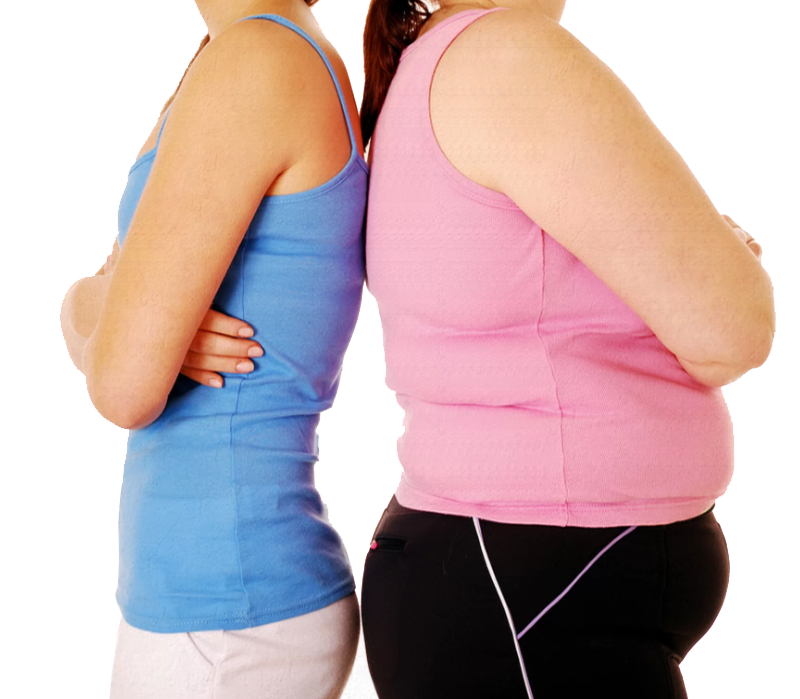
The Mayo Clinic Diet for weight loss is based upon years of research and clinical trials. It is designed for you to swap unhealthy habits for healthy ones. You can lose weight permanently and keep it off.
Your risk of getting sick can be reduced by losing weight. You can also manage high cholesterol and other medical conditions by losing weight.
It's also a great way to start incorporating more exercise into your life and improving your health overall.
Before you can start any exercise or diet program, you will need to have permission from your doctor. The Mayo Clinic Diet is not an exception. The Mayo Clinic Diet can be modified for people with heart disease, diabetes, kidney disease or other conditions by their healthcare team.

The Mayo Clinic Diet might be the best option for those looking to lose weight quickly and easily. The Mayo Clinic Diet is a weight loss program that encourages healthy eating and increases physical activity.
The Mayo Clinic Diet is divided into two phases. It calls them "Lose it!" and "Live It!" It calls "Lose It!" and "Live It!"
The "Lose It!" phase is the first. You'll be focusing on changing unhealthy habits and losing 6-10 pounds in the first phase, known as "Lose It!" It will teach you about setting goals, dealing with setbacks, and finding your inner motivation for sticking to the program.
After you complete the first phase, you'll move onto the second phase, which is called "Live It!" You will learn about portion sizes, meal planning, healthy eating habits and how to exercise. You will see steady weight loss of between 1 and 2 pounds (0.5 to one kilogram) each week until reaching your goal weight.
During this phase you will receive advice on how to maintain your fitness and food journals and track your progress. Access to digital tools such as weight and food trackers will be available to help you on your way to a healthier life.

The Mayo Clinic Diet promotes weight loss through low-calorie diet and exercise. Its key components include the Mayo Clinic Healthy Weight Pyramid, flexible meal planning, and an approach to meal planning.
This plan will ensure that you are getting sufficient nutrients and calories from nutritious food while still enjoying your favorite foods. It encourages eating fruits, vegetables, whole grain, and reduces consumption of processed foods, sugary beverages, or fatty cuts.
Three Lean & Green meals are included in the Mayo Clinic Diet. One is your Medifast meal at home. The other two are the calorie-free meals from the program. You must have at least one serving each of fruits, vegetables, or a snack in your Lean & Green meals.
The Medifast foods are low in calories and contain other lean protein sources like fish and poultry. You can also eat legumes and beans. There are many fruits, nuts, and seeds that you can enjoy.
FAQ
What's the best breakfast?
It's not easy to find a healthy breakfast. But some foods are better for you than others. Let's take a look at them all and see which are the best.
First, calculate how much fat each day. This means you need to know your daily calorie intake. We'll then look at the most essential nutrients in food to help you decide which ones to focus on.
Next, we'll go through the list of recommended breakfasts and pick the healthier options. We will also discuss the reasons these foods might be better than others.
We will then look at the most unappetizing breakfast options and discuss why they are not worth eating.
Let's begin with the fundamental question: What's the best breakfast?
There's no simple answer. It all depends on many variables. It all depends on who you are and what you eat at different times of the day, where you live, and whether you have children.
These are our top three picks, after considering all of these things.
-
Eggs are one of the few whole foods that can help you lose weight. Eggs are high in protein, which can help build muscle and make you feel fuller. Research has shown that egg-eating people tend to be less overweight than those who do not. Organic eggs should be free from pesticides and antibiotics.
-
Greek Yogurt contains about five times the protein as regular yogurt. It's a great choice to increase your intakes high-quality protein. Protein is key when trying to control hunger.
-
Oatmeal has many great qualities. It's filling and nutritious, doesn't take much preparation, and it's easy to prepare. Oatmeal contains fiber, which slows your digestion. It makes you feel fuller, longer. Oatmeal is rich in antioxidants but you probably won’t notice as you’ll likely be drinking coffee and tea alongside it. Both of those beverages contain loads of caffeine, which reduces the antioxidant benefits of oats.
Now, let's move on to the next question: Which is the least healthy breakfast?
Here's the short answer: It depends.
A bagel from the grocery shop is a good option if you are looking for something quick. Bagels have a low amount of calories and carbs and are mostly water-based.
They're also very convenient since you don't have to cook them!
Bagels aren’t good for your health. Research has shown that bagels are a good choice for people who want to lose weight.
Bagels today have a lower sodium content than in the past, but they still contain lots sugar.
Another option is to get a muffin, or scone from a supermarket's bakery. These are made with butter and white flour.
Scones and muffins can also be made with nuts or fruit. So they could be considered better choices than a plain bagel.
The bottom line is that there isn't a bad choice for breakfast. You do need to make sure that you are satisfied with what you eat, and not starve yourself later in the day.
How much food do I need every day?
Calorie requirements vary depending on gender, age, activity level, size, health status, and other factors.
In order to maintain their weight, adults consume between 1,200-1 800 calories per day.
Calories are made up of carbohydrates (starchy foods), fat, and protein.
Carbohydrates are composed of glucose and fructose. Glucose provides the main source of energy for our muscles. Fructose supplies additional energy to our brains, nervous system and muscles. Sucrose includes both glucose (or fructose) and is therefore easier to digest.
Protein is vital for muscle growth and repair. Protein can be found in meat, poultry and eggs as well as yogurt, dairy products, soyabeans, legumes, soybeans and some seafood.
Healthy living requires fat. Fat keeps you full longer and provides essential vitamins and minerals such as vitamins A, E, D, K, and B12, omega-6 fatty acids, and monounsaturated fats.
High cholesterol and other cancers are also protected by fat.
Experts recommend consuming no more that 30% of your total calories from saturated oils.
There is no evidence that reducing saturated fat will reduce your risk of developing heart disease.
Healthy eating should include 20-35% carbohydrate, 10%-35% protein, and 35%-50% fat.
What are the 3 most dangerous foods for cardiologists?
These three foods are recommended by cardiologists to be avoided because they contain too many cholesterol and saturated fat.
The American Heart Association recommends limiting intakes of trans fats found primarily in margarine and partially hydrolyzed oils. Trans fats raise LDL levels (bad) and lower HDL cholesterol. LDL cholesterol levels can lead to heart disease, high blood pressure, and high blood sugar.
The cholesterol levels of high-fat dairy products, such as cream cheeses, butter, whole milk, cream cheeses, cream cheeses, butter, icecream, sorb cream, and yogurt, can be raised by using high-fat dairy products. Certain dairy products can cause allergic reactions in some people.
LDL cholesterol levels in saturated fat are higher than those in HDL. Saturated Fat is found in red meats and poultry, full-fat milk products, palm oils, coconut oil, cocoa butter, and other vegetable oils. Saturated fat can be dangerous if it is consumed in excessive amounts.
Reducing or eliminating animal products from your diet could improve cardiovascular health.
A simple change to the types of foods you consume can significantly reduce your chances of having a heart attack.
It's never too early to make positive life changes. Before starting any new diet, you should consult your doctor.
What makes a vegan diet different from other diets and how can it be improved?
Vegan diets are different from all other diets in that they don't include meat, dairy, eggs, or any other animal products. Vegans are advised to avoid dairy products, eggs, and milk.
A vegan diet is different from other types of veganism in that they don't eat meat, poultry, or dairy products. This is why vegans often refer to themselves as vegetarians.
Vegans should avoid honey, gelatine, leather, silk, wool, feathers, fur, cosmetics that are tested on animals, as well as most processed foods.
Veganism is a dietary choice that promotes compassion for animals and environmental sustainability. It is against the consumption of animal products, due to the suffering and deaths caused by factory farming, as well as the damage done during slaughter with hormones, anti-biotics, and other chemicals.
Veganism advocates vegetarianism, which involves reducing, rather than eliminating, the consumption of animal flesh and secretions.
Vegans generally eat a plant based diet. However they do consume small amounts seafood like nutritional supplements, fruits, veggies, seeds, and grains.
Vegans are often called "vegetarians" as they avoid meat, poultry, and fish. Although technically speaking, vegans should avoid all animal products, including dairy and eggs, the term vegan has become commonly associated with those who exclusively avoid these three categories.
Vegans are those who eat less than 5 ounces (or 1/4 pound) of meat per week.
Vegans might include dairy products and eggs in their diets, but this is not a common practice.
Lacto vegetarians, also known as Lacto-ovos, eat dairy products and eggs. They avoid meat. They also eat some chicken, fish and shellfish. They may be considered flexitarians in regards to meat, but they strictly follow the vegetarian lifestyle.
Ovo-lacto vegetarians avoid red meat and eat dairy products and eggs. They may also eat some poultry, shellfish, and fish.
Pescatarians, who are vegetarians who eat fish, are also known as pescatarians. Pescatarians have to manage their cholesterol carefully because fish is high in fat. They prefer to eat non-fried or low-fat varieties of fish.
There are two types of vegans: flexible and strict. Vegans who are strict abstain completely from all animal products, including dairy and eggs. Flexible vegans are restricted in the animal products they eat. They may eat only one egg or opt for skimmed milk.
In recent years, there has been a growing trend towards plant-based diets among health-conscious consumers looking to lose weight, lower cholesterol, reduce blood pressure, improve diabetes management, prevent heart disease, and live longer. Between 2007 & 2010, the American vegan population grew by 50%. According to industry estimates in 2016, that number was 2.5 million.
What foods clean arteries out?
The best way to keep your heart healthy is to eat right. What does this mean exactly? There are many ways to achieve this. One is to eat more fruits and veggies.
Antioxidants found in fruits, vegetables and other foods help prevent and treat disease. Antioxidants are also known to fight inflammation, which can prevent cloggedarteries.
There are other ways you can reduce your cholesterol. You'll have a lower chance of having a coronary attack if your diet is low in saturated fats, such as butter, or trans-fatty Acids (found in processed foods like fried food).
You can increase fiber intake. This will keep your blood flowing freely throughout your body. LDL cholesterol, which is bad cholesterol that can lead to cardiovascular problems, can be reduced by fiber.
Your heart health is not only affected by what you eat. There are many other factors as well. Stress, smoking, obesity and alcohol consumption all play a part in your risk of developing heart disease.
If you're at risk of developing cardiovascular disease, talk with your doctor about how much fiber and other nutrients you should get each day. You may need to take medications or make lifestyle changes to stay healthier.
What are the 5 keys to a healthy diet?
You might have heard the phrase "You are what is in your stomach." A healthy diet is made up of five key components.
They include eating plenty of fruits and vegetables, avoiding processed foods, drinking lots of water, exercising regularly, and limiting alcohol consumption.
The first three items are essential for overall health, while the last two are important for maintaining weight control.
You can ensure that these nutrients are consumed by adding them to your daily meal.
In your diet, include a variety fresh produce, such as fruits, leafy greens and whole grains. These foods contain vitamins C, D, and E which protect against heart disease, cancer, and other diseases.
Avoid processed food. This includes soft drinks, candy bars, cookies, and chips.
Water intake of eight glasses daily can help keep your body hydrated. This will prevent you from becoming dehydrated and keep your metabolism working efficiently.
It is important to exercise as part of a healthy lifestyle. If you aren't active, you run the risk for obesity-related conditions like diabetes, heart disease and stroke.
Don't drink alcohol. Drinking alcohol increases blood pressure, causes headaches and can cause liver damage.
If you follow this advice, you will be well on your way to a healthier life.
Statistics
- Trim fat off meat or choose lean meats with less than 10% fat. (mayoclinic.org)
- In a review of studies, intermittent fasting was shown to cause 0.8–13% weight loss over 2 weeks to 1 year. (healthline.com)
- Half a cup of 1% cottage cheese has 14 grams of protein and only about 80 calories, so one portion is super protein-packed. (prevention.com)
- Another study in adults with obesity over 12 weeks found that the DASH diet helped decrease total body weight, body fat percentage, and absolute fat mass in study participants while preserving muscle strength (healthline.com)
External Links
How To
Vegetables & Fruits have Health Benefits
Many benefits are associated with fruits and vegetables for our bodies. Here are just a few.
They provide fiber, minerals, and vitamins. Fiber aids digestion by helping to remove toxins. Minerals like potassium and calcium promote bone health and protect against osteoporosis. Vitamins boost energy, strengthen immune systems, and aid in growth and development.
Fiber is good for constipation prevention and normal bowel movements.
Fiber is a powerful anti-infective agent.
Vitamin C and iron are found in fruit and vegetable juices. Vitamin C strengthens bones, fights infection, and promotes tissue repair.
Vegetables and fruits are low in calories, but they provide a variety of essential nutrients that are vital to our health. They are also inexpensive and simple to prepare.
They are also rich in antioxidants. Antioxidants help protect against free radicals and other forms of cellular damage. Free radicals, which are unstable molecules that can cause damage to cells, are known as free radicals. Antioxidant compounds can include phytosterols, flavonoids as well as phenolic and flavonoids.
Antioxidants slow down aging processes and may extend your lifespan.
Vegetables and fruits are good for skin health. The bright colors of fruits and vegetables come from their high levels of beta-carotene or lycopene. These pigments play a role in protecting skin cells from sun damage.
Beta-carotene protects the eyes against macular degeneration, cataracts and age-related blindness. Lycopene has been shown reduce prostate cancer risk.
You will feel healthier physically, mentally, as well as emotionally if you eat fruit and vegetables frequently.